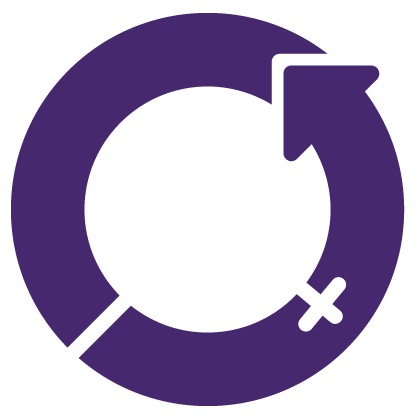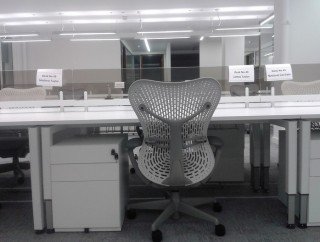 Lean In is trying to dispel gendered stereotypes such as ‘the harried mum’.
Lean In is trying to dispel gendered stereotypes such as ‘the harried mum’.
The Getty Images/Lean In stock photos reveal more about our gender ideals than anything else.
Facebook's Chief Operating Officer Sheryl Sandberg is on a mission: her Lean In campaign wants women to ask for equal pay, take promotions and reach positions of leadership.
Sandberg wants attitudes to change and she has a wide audience – her 2010 TED talk alone has had nearly four million views.
Her Lean In brand has become synonymous with promoting female empowerment, especially in corporate America.
On 10 February, Lean In announced it was partnering with Getty Images to tackle what, to many, was an unexpected foe: stock photos.
The two organisations have launched a collection of stock photos in an attempt to challenge the gender stereotypes that have reigned in the stock photo world for decades, including the 'harried mum', 'photogenic secretary' and the much ridiculed 'woman laughing alone with salad' stereotypes.
The resulting images are diverse; depicting women of different generations and occupations carrying out tasks from the everyday to the extreme.
The collection has received a mixed response.
Many have pointed out that the photos are still 'cheesy' or 'bland'. Some believe the collection is well-intentioned but in vain, because the same editors are still ultimately making the decisions about which photos will sell products.
Some argue that representation of women's diverse roles in society should be the norm rather than newsworthy.
Others take issue with Lean In's priorities: they see the collection as a 'cosmetic fix' to structural gender inequality.
A backlash against the campaign came to a head when the Twitter hashtag #notyourstockwoman encouraged people to send in their own photos of working women to be part of the collection, leading to arguments of exploitation as the freely given photos could then be sold on.
But the debate caused by the collection is healthy and contributes to the wider debate about the representation of women and women's bodies that we have seen follow initiatives such as The Shape of a Mother blog, the time-lapse video highlighting the falsifying effects of photoshopping, the A Beautiful Body Project, or David Jay's The Scar Project.
However the debate misses one key point: what the Lean In collection says about its audience.
In 1979, Canadian-American sociologist Erving Goffman published an important book called Gender Advertising which discussed how the depiction of men and women in advertising expresses the purest form of a society's gender ideals, providing subtle social cues to regulate the performance of gender in the real world.
Goffman studied adverts and came to the conclusion that women are often presented at the mercy of their environment: caressing objects rather than grasping them; dreamy rather than engaged; off-balance and passive, leaning or lying down with tilted heads or one dropped hip, rather than standing and active.
In contrast, Goffman noted that almost all men in advertising are positioned in active control of their environment: standing, engaging with their setting, gripping objects, ready for action.
Thirty-five years after Goffman's book was published, his observations still ring true.
A cursory glance at the advertisements for women's clothing by American Apparel for example shows that imagery of women as passive is still in demand.
Where mainstream advertising still focuses on representing women in this way, the Lean In collection shows imagery of women leading planning meetings, weight lifting, operating heavy machinery, or teaching their sons to sew. It shows girls learning to skateboard and men in active childcare roles.
There is both audience and appetite for these images, as Claire Cain Miller wrote in the New York Times: Getty Images serves 2.4 million customers and the three most-searched terms in Getty's image database are 'women', 'business' and 'family'.
In an interview in Businessweek, Pam Grossman, Getty Images' director of visual trends, explained that even before the Lean In collaboration she had noticed a shift in the types of female stock images companies were buying: from passive, naked women lying on tables to fully-clothed, freckle-faced women travelling by train.
In an interview with the Washington Post Grossman made another good observation: "Women are the primary users of social media, in control of the images they put out of themselves on Instagram, Facebook, Tumblr, Twitter, Pinterest.
"They are conveying from the bottom up what the standards of beauty should be. The old model was very top down.
"Now women are demanding to be seen, and they want authentic images of their own lives reflected back to them in advertising".
Therein lies the real story: today, there is growing demand for imagery of women who are active and in control of their environments. That is, as Goffman might say, the purest expression of change afoot in our society's gender ideals.






